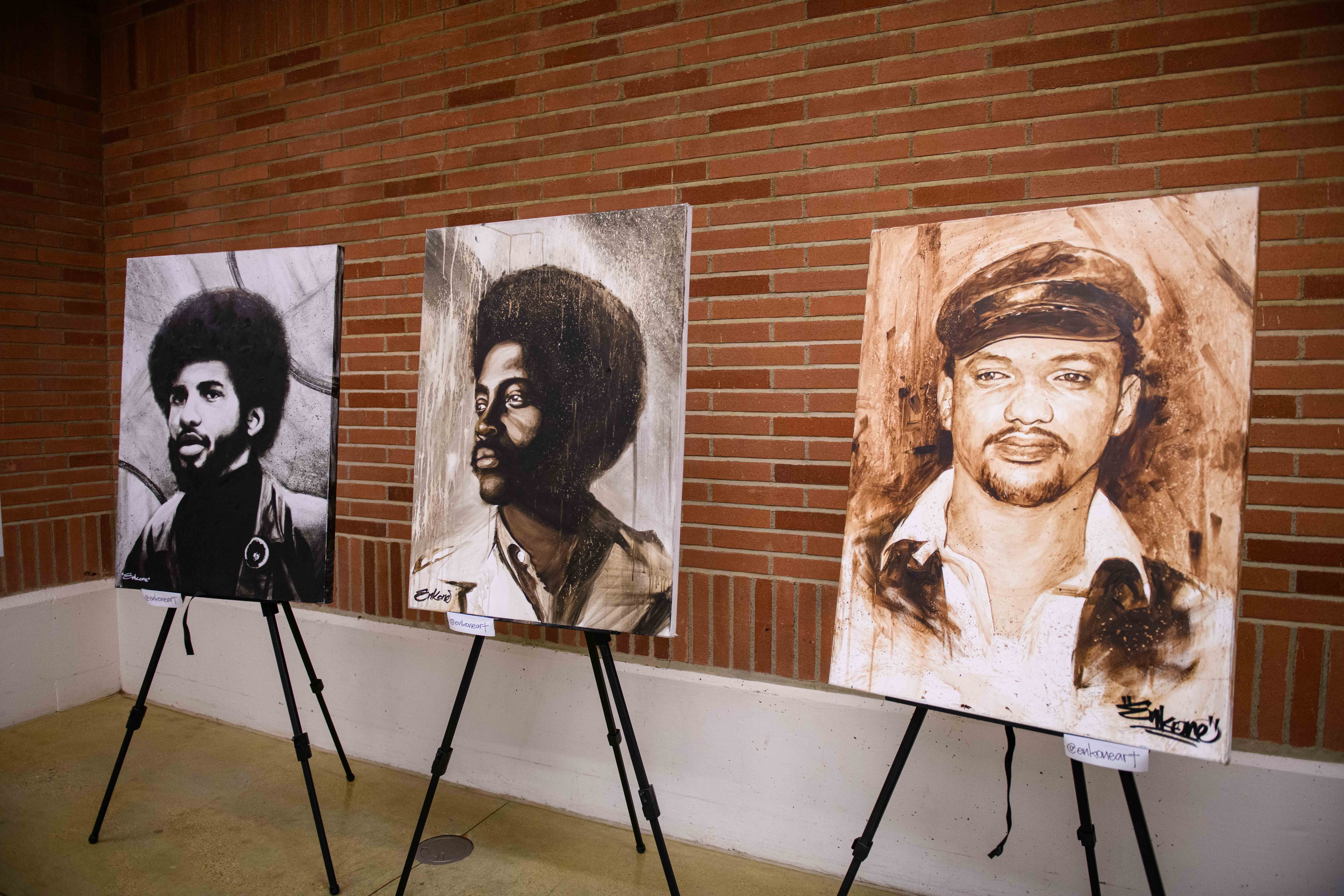get these nets
Veteran
Death of a Black Panther - John Huggins Audio Documentary
This is an audio documentary created by Austin Clarke. He interviews John Huggins’ mother and widow. The time of this documentary was March 1969, two months after John Huggins and Bunchy Carter were gunned down at UCLA in Campbell hall
=======================

UCLA community honors legacy of killed Black Panther students

A vigil was held Tuesday evening for Alprentice “Bunchy” Carter and John Huggins Jr. The two were students and Black Panthers shot and killed in Campbell Hall on Jan. 17, 1969.
Jan. 18, 2023
Around 60 UCLA community members gathered Tuesday evening to honor the 54th anniversary of the death of two former students and Black Panthers who were killed in Campbell Hall.On Jan. 17, 1969, Alprentice “Bunchy” Carter and John Huggins Jr. were shot by Claude “Chuchessa” Hubert, following a meeting to select a director for UCLA’s Afro-American Studies Center – now known as the Bunche Center – said JeiRonemo Thomas, the Afrikan Student Union Chairperson. The incident happened as the FBI was conducting COINTELPRO, an FBI program which aimed to fuel tensions among Black activists and community-led organizations such as the Black Panther Party and Hubert’s Black nationalist party, Organization US, both of which had a presence on campus, added Thomas, a fourth-year political science student.
Carter and Huggins were admitted to UCLA in 1968 under the High Potential Program – which developed into the Academic Advancement Program – and were integral to forming the Los Angeles Chapter of the BPP.
The ASU and AAP organized the event, which featured a screening of Gregory Everett’s documentary, “41st and Central, The True Story of the L.A. Black Panthers,” a discussion panel of former Black Panthers, Gregory’s son Jeffrey Martin-Everett and Chair of the Department of African American Studies Cheryl Keyes. The ceremony also featured guest speaker Slauson Girl, a prominent LA reporter and founder of Slauson Girl Media Group, ending with a candlelight vigil and moment of silence outside Campbell Hall.
“If you’re just walking in the building, and you don’t know the history of the building, you are avoiding everything you should recognize and know,” said Kahlila Williams, the ASU programming coordinator.
Following the 1969 killings, the LAPD arrested Black Panther members despite them being on the receiving end of the violence, Thomas said. He added that the assassinations led to uncertainty and disruption in political organizing in the Black LA community.
Since the incident, the university has failed to make any meaningful acknowledgements, Thomas said. While it’s important for student organizations and university departments to celebrate Carter and Huggins, the university also has a responsibility to uplift their legacies as student and community organizers, Thomas added.
To create space for their stories, the AAP has held memorials for Carter and Huggins on the UCLA campus since 1999.
Thomas said the ceremony served to honor and educate the community on the history and contributions of Carter and Huggins and why students have a responsibility to preserve their impact.
Carter, who grew up in Slauson – located in South LA – was a key figure for many in the Black working-class community and his advocacy helped many understand the necessity of radical organizing, Thomas said.
Huggins was a charismatic leader and critical in helping establish the Black Panther LA chapter, student organizing at UCLA and mutual aid projects, Thomas added.